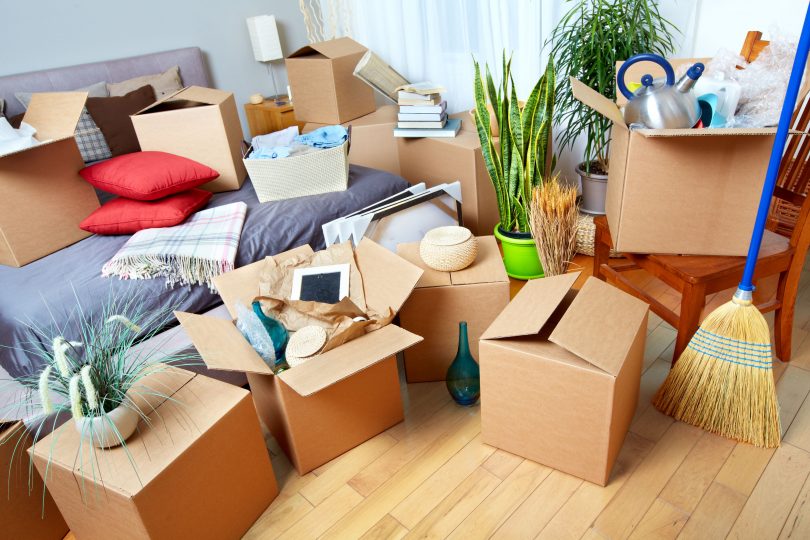So you’re getting ready to move to a new apartment across town. You’ve scored the most amazing new space with tons of window space for maximum daylight, and you can’t wait to get all of your plants set up to thrive. But…
How will you get them all there safely? It’s a little more complicated than it seems, it’s true — but with some precautionary steps, you can get all of your plants to your new home without breaking a pot or killing that big leafy Begonia. Here is what you need to do:
1. Make sure that you hire a moving company that moves plants
Not all moving companies are willing to take on the responsibility of moving a living thing or hauling plants long distance, but one of Unpakt’s local movers would be a good choice for a moving company to take care of your leafy friends. If you have a significant collection, be sure to ask during the inquiry process.
2. Put plants in unbreakable plastic containers about 3 weeks before the move
Add this to your moving checklist so it doesn’t sneak up on you — that way the movers won’t have to be concerned about breaking your more delicate ceramic pots, and your plants will have time to recover from the shock of being re-potted. During the move, plastic containers will be much more flexible and resilient to bumps than a heavier ceramic container!
3. Put plants in unbreakable plastic containers about 3 weeks before the move
If any of your plants are large and leafy like house ferns or giant spider plants, prune them well before the move to make them a little more manageable. In time, they will grow back even healthier! The one exception is succulents, in which case you should leave the plant alone. The move will likely be stressful enough.
4. A week before the move, check the plants to make sure they are healthy and doing well
Check for mites, fungus, or other plant illnesses and treat with natural remedies as possible to make the plant less susceptible to damage during the move.
5. Two days before the move, water the plants and then let it get absorbed before the move
You don’t want to be dealing with sopping wet plants, and really damp soil is more likely to conduct extreme temperatures to the plant roots. Also, make sure you have enough boxes for all the plants to have their own space. The boxes should be tall enough for the plant to not tip over without crushing the leaves, and if you are closing the box be sure to poke holes so the plant can breathe.
6. The night before or the morning of the move, wrap plants in tissue paper to protect them
Line your boxes with plastic bags in case they tip or leak moisture, and put rags or towels for extra cushioning. You can also put wet newspapers in the boxes to keep them cool and moist on a super hot moving day, though it is best to move plants in less extreme temperatures.
7. Plants should be the last thing to load after everything else is already ready to be moved
You know how sensitive plants are to changes in the house, so multiply that by a significant factor when you start exposing houseplants to the elements. Avoid letting plants sit in the moving truck or in your car for too long, especially in cold or heat, as it could damage their foliage.
8. After you arrive, let the plants get acclimated to their new home before transferring them back to their permanent potting
In the natural world, plants don’t generally move around much, so it may take some time for your plants to get used to their new home. They may look wilted or unhealthy for a little while, but with good care, they will bounce back after a couple of weeks. Once they look healthy again, transplant them back to their ceramic pots and put the finishing touches on nesting in your new home!








